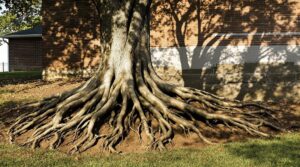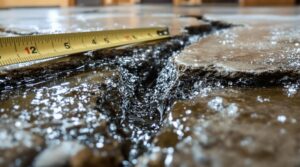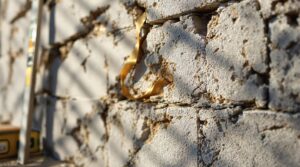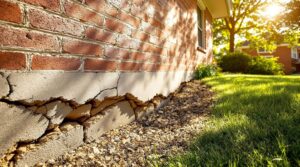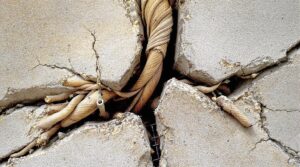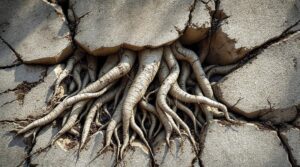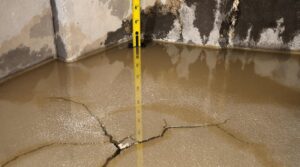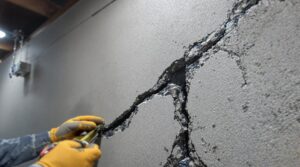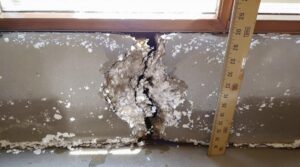Pine tree roots can cause significant damage to building foundations, particularly if the trees are large, old, or have an extensive root system that extends towards the foundation. Root depth and spread impact the likelihood of damage, with deeper root systems posing a greater risk. Soil type and composition also play a role. Understanding pine tree root growth patterns and taking preventative measures can help mitigate the risk of foundation damage. Further exploration of this topic can reveal strategies for prevention and management.
Key Takeaways
- Pine tree roots can damage foundations, especially if the tree is large and located close to the foundation.
- Root depth and spread are key factors in determining the likelihood of foundation damage from pine tree roots.
- Trees with deeper root systems, such as the Loblolly pine, are more likely to cause foundation issues.
- Signs of pine tree root-related foundation problems include cracks in walls and floors, uneven floors, and difficulty opening doors and windows.
- Preventative measures, such as root barriers and strategic tree placement, can help mitigate the risk of foundation damage from pine tree roots.
Understanding Pine Tree Root Growth Patterns
Because pine tree roots play an essential role in a tree's overall health and stability, understanding their growth patterns is crucial for identifying potential risks to nearby structures.
The growth patterns of pine tree roots vary depending on factors such as tree species, age, and environmental conditions. On average, the root depth of a mature pine tree can extend 2-3 times the diameter of the tree's canopy. However, some species, such as the loblolly pine, have taproots that can reach depths of up to 20 feet.
In contrast, other species, such as the white pine, have shallower root systems that are more fibrous. Understanding these growth patterns can help individuals assess the likelihood of pine tree roots interfering with nearby structures.
Factors That Influence Foundation Damage
When evaluating the potential for pine tree roots to cause foundation damage, several key factors must be considered.
These factors can greatly impact the likelihood and extent of damage.
The following factors are particularly influential:
- Root depth and spread: Trees with deeper, more extensive root systems are more likely to cause foundation damage. Pine trees with taproots that grow straight down can be less problematic than those with shallow, spreading root systems.
- Soil type and composition: Soil density, moisture content, and composition can affect root growth and the potential for damage. For example, expansive soils that swell with moisture can increase pressure on foundations.
- Tree size and proximity: Larger trees growing closer to foundations are more likely to cause damage due to their more extensive root systems and increased water uptake.
Signs of Pine Tree Root-Related Foundation Problems
Numerous signs can indicate foundation problems caused by pine tree roots. Homeowners may notice cracks in walls and floors, uneven or sagging floors, and doors and windows that are difficult to open or close. These symptoms can result from root intrusion, where pine tree roots grow into the foundation, causing damage and displacement.
Soil stability can also be compromised as pine tree roots absorb moisture, leading to soil shrinkage and settlement issues.
In addition, signs of pine tree root-related foundation problems may include chimney damage, leaning or bowing walls, and noises such as creaks and groans. Homeowners may also notice water damage or leaks due to cracks in the foundation.
In severe cases, foundation damage can lead to collapse or structural failure. Recognizing these signs is essential to addressing the issue promptly and preventing further damage. Regular inspections and monitoring can help identify potential problems early on.
Preventing Foundation Damage From Pine Tree Roots
While pine tree roots can cause significant damage to foundations, there are measures that can be taken to prevent such issues.
Effective prevention involves careful planning and maintenance to mitigate the risks associated with pine tree roots.
To prevent foundation damage from pine tree roots, consider the following measures:
- Root barrier installation: Installing a physical barrier between the tree roots and the foundation can prevent root growth and subsequent damage.
- Soil moisture management: Managing soil moisture levels through proper irrigation and drainage systems can reduce the likelihood of tree roots growing toward the foundation.
- Tree placement and selection: Strategically selecting and placing trees in areas away from foundations, taking into account mature tree size and root growth patterns, can also help prevent damage.
Managing Existing Pine Tree Roots Near Foundations
In cases where pine trees are already established near foundations, measures can be taken to manage the existing roots and mitigate potential damage. Root pruning is a common method used to control the growth of pine tree roots near foundations. This involves cutting or removing select roots to prevent them from growing towards the foundation.
| Method | Description |
|---|---|
| Root Pruning | Cutting or removing select roots to control growth |
| Root Barriers | Installing physical barriers to prevent root growth |
| Landscaping Solutions | Planting shallow-rooted plants or using decorative rocks to reduce soil disturbance |
Regular maintenance is essential to prevent damage from pine tree roots. Landscaping solutions, such as planting shallow-rooted plants or using decorative rocks, can also help reduce soil disturbance and prevent root growth towards the foundation. By taking proactive measures, homeowners can minimize the risk of foundation damage from existing pine tree roots.
Frequently Asked Questions
Can Pine Tree Roots Grow Under a House's Foundation Without Causing Damage?
Silently spreading, pine tree roots can grow under a house's foundation without causing damage if the root growth is slow and the foundation stability is not compromised by soil settlement or water infiltration issues.
Are Certain Pine Tree Species More Prone to Causing Foundation Damage?
Certain pine species exhibit more aggressive root characteristics, increasing likelihood of foundation damage. Fast-growing species like Loblolly and Monterey pines tend to develop more extensive root systems, posing higher risks to nearby foundations.
How Long Does It Take for Pine Tree Roots to Damage a Foundation?
Pine tree roots can compromise foundation stability over a prolonged period, typically 10-20 years, as root growth is a gradual process that can exert increasing pressure on surrounding structures, potentially leading to damage and destabilization.
Can Pine Tree Roots Damage a House's Plumbing System?
Mature pine tree roots can extend up to three times the tree's canopy. A house's plumbing system is susceptible to root invasion, potentially causing plumbing issues such as clogged drains and cracked pipes due to growing pressures.
Is It Possible to Sue a Neighbor for Pine Tree Root Damage?
Pursuing legal action against a neighbor for pine tree root damage is a viable option in neighbor disputes. Property owners may seek compensation for damages, and courts may order removal of the offending tree or other remedial actions.
